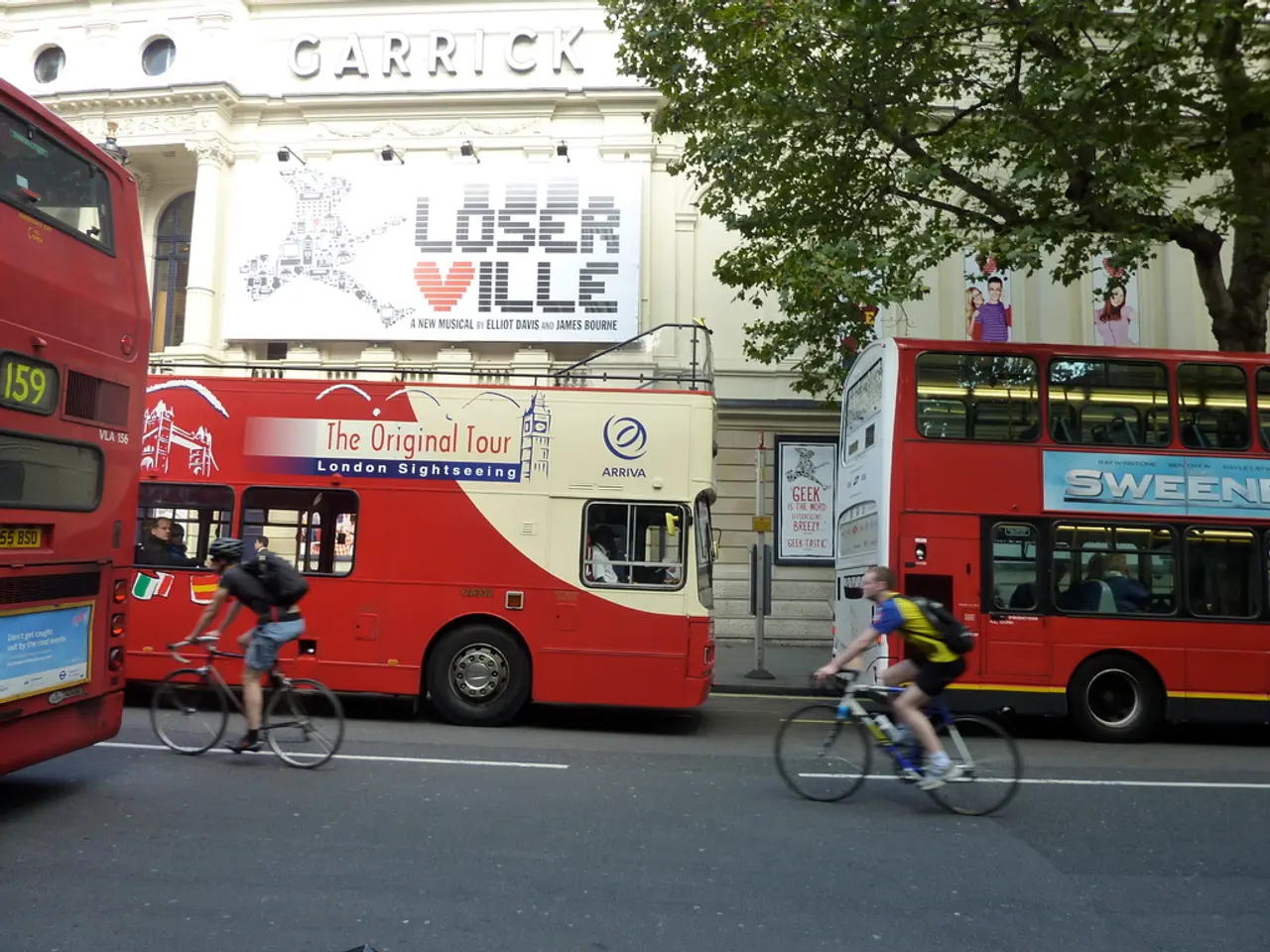Harmful cycling spots identified in Trier: Risks escalate for cyclists
In the historic city of Trier, cyclists often encounter hazardous and confusing spots, such as cars squeezing in, narrow streets without bike lanes, and intersections where buses and cars cut across the bike path. According to Iris Wiemann-Enkler, a traffic expert at the city of Trier, creating ideal conditions for cycling is challenging in a city with narrow streets and houses close to the road.
Our website reporter, Martin Schmitt, conducted a self-check and identified five spots where cycling in Trier is particularly risky. One such spot is the traffic light at the end of Karl-Marx-Straße, where buses drive on the same lane right behind cyclists, causing extra stress on the way towards the main station.
Another problematic area is Saarstraße, where the bike stop line becomes a squeeze zone, a spot where cyclists come under pressure when starting. The bike lane from the Konrad-Adenauer Bridge ends abruptly in the middle of the turn lane onto Saarstraße, requiring cyclists to dismount and push their bikes across the pedestrian path, increasing the risk of colliding with pedestrians.
At the height of Porta Nigra, drivers often overlook the red bike lane exclusively for buses and cyclists. In Christophstraße, cyclists and buses share a dedicated lane, but cars can turn into Balduinstraße and cross the bike path, creating a hazardous situation.
In many cases in Trier, bike lanes end abruptly, which can be inconvenient and dangerous, especially in heavy evening traffic. At Saarstraße/Corner Südallee, dedicated stop lines for cyclists often get blocked by drivers, causing stress for cyclists.
In some instances, drivers illegally turn right onto Johanniterufer, cutting across cyclists, and some drivers try to quickly overtake cyclists or drive close to them, causing uncertainty and potential swerving onto the pedestrian path of the Roman Bridge.
However, Trier has made efforts to improve cyclist safety. New bike lanes have been established on Christophstraße and Südallee, the Mosel cycle path has been renovated, and a bike street in Trier-Süd has been created. The city has also implemented measures such as bike lanes, separate bike paths, and road markings.
Despite these improvements, everyone must sometimes share the space in a historic city like Trier. The new train stations on the West route in Trier will soon be better connected to the cycle path network, indicating a continued commitment to improving cycling conditions.
Improvements for cyclists in Trier not mentioned in the provided text include the overall gradual enhancement of the cycling climate rating. Trier moved from a "poor to sufficient" rating in 2010 to receiving a "3" in the 2014 ADFC bicycle climate test, indicating some progress in infrastructure or conditions for cyclists during this period.
As always, cyclists are advised to exercise caution and be aware of their surroundings when navigating Trier's streets.
Read also:
- Lu Shiow-yen's Challenging Position as Chair of the Chinese Nationalist Party (KMT) Under Scrutiny in Donovan's Analysis
- Tough choices on August 13, 2025 for those born under Aquarius? Consider the advantages and disadvantages to gain guidance
- Microbiome's Impact on Emotional States, Judgement, and Mental Health Conditions
- Restaurant staff allegedly requires Minnesota teenager to validate her gender for bathroom access.







